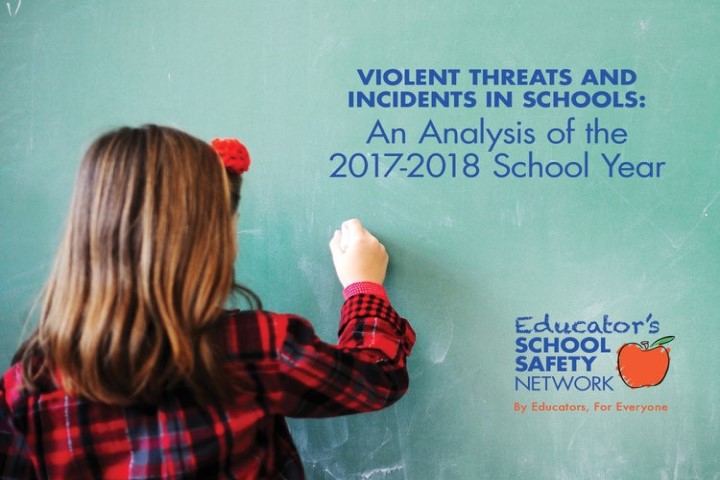A recent analysis by the Educator’s School Safety Network found incidents of school violence across the country, though more than half of the incident in the 2017-18 school year occurred in just 10 states.


A recent analysis by the Educator’s School Safety Network found incidents of school violence occur in every part of the country, though more than half of the incidents in the 2017-18 school year occurred in just 10 states.
The Network – a nonprofit “dedicated to empowering educators with education-based school safety training and resources” – reports that the top 10 worst states for school violence include California, Florida, New York, Michigan, Pennsylvania, Ohio, Texas, Illinois, North Carolina and Virginia. A total of 1,851 threats or violent incidents occurred in those states, or roughly 51 percent of the nationwide total of 3,654, USA Today reports.
The nationwide total, meanwhile, increased significantly from a total of 2,085 incidents the year prior.
Experts told the news site the results are influenced by a multitude of factors, but one common theme seemed to be the number of school districts in the state. Amy Klinger, director of programs for ESSN, told USA Today that increasing bureaucracy likely complicates efforts to coordinate responses to violent incidents.
Klinger offered Ohio as an example. The Buckeye State hosts 613 school districts, she said, and officials recorded 170 threats and 14 violent incidents last school year.
“It’s very difficult to make sweeping changes when you have 613 different government bodies making decisions,” she said.
School safety remains in the spotlight in the wake of a deadly rampage at Parkland, Florida’s Marjory Stoneman Douglas High School in February, an incident that sparked protests for gun control and efforts in virtually all states to control school violence.
The federal government has also dedicated $1 billion to help schools prevent violence over the next decade.
Klinger pointed out that while the bulk of the incidents are concentrated in certain states, school violence is a problem that’s plaguing communities across the country.
“We have seen that there are threats and incidents of violence that occur in literally every state,” she said. “So, it’s really incumbent upon every school to take a look at what they need to do.”
The ESSN research suggests improved communication and coordination between school districts and law enforcement could be an important element to keeping kids safe.
That increased communication would also undoubtedly result in a more consistent message that threats, violence, and other bad behavior simply won’t be tolerated at school. It’s an approach researchers at the Institute of Advanced Studies in Culture contend is the most effective for character education.
Institute founder James Davison Hunter wrote in “The Tragedy of Moral Education in America”:
Moral education can work where the community, and schools and other institutions within it, share a moral culture that is integrated and mutually reinforcing; where the social networks of adult authority are strong, unified, and consistent in articulating moral ideas and their attending virtues; where adults maintain a ‘careful watchfulness’ over all aspects of a young person’s maturation.
Parents, educators and others working to end school violence can find a plethora of information about risk and protective factors from the Centers for Disease Control and Prevention. The CDC website breaks down the individual, family, peer and social risk factors contributing to the problem, as well as other resources that offer “Opportunities for Action.”